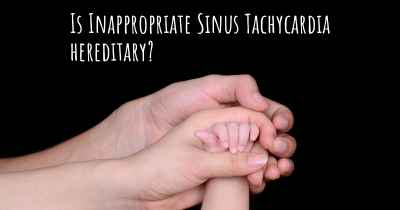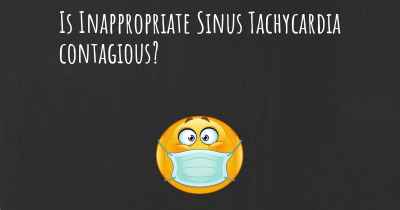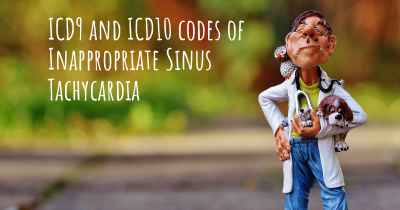What is the history of Inappropriate Sinus Tachycardia?
When was Inappropriate Sinus Tachycardia discovered? What is the story of this discovery? Was it coincidence or not?

Inappropriate Sinus Tachycardia (IST) is a condition characterized by an abnormally fast heart rate originating from the sinus node, the natural pacemaker of the heart. It is considered a relatively rare disorder that predominantly affects young to middle-aged women.
Historical Background:
The history of Inappropriate Sinus Tachycardia dates back to the late 20th century when it was first recognized as a distinct clinical entity. Prior to its identification, patients with rapid heart rates were often misdiagnosed with anxiety or other cardiac conditions. It was not until the early 1990s that researchers began to unravel the specific characteristics and underlying mechanisms of IST.
Characteristics and Symptoms:
IST is defined by a resting heart rate exceeding 100 beats per minute (bpm) in the absence of any physiological or psychological stressors. Unlike other forms of tachycardia, IST is not associated with structural heart disease or abnormal electrical pathways. The exact cause of IST remains unknown, but it is believed to involve dysfunction of the autonomic nervous system, which regulates heart rate.
Patients with IST often experience a range of debilitating symptoms, including palpitations, fatigue, exercise intolerance, dizziness, and shortness of breath. These symptoms can significantly impact a person's quality of life and daily activities.
Diagnostic Challenges:
Diagnosing IST can be challenging due to its non-specific symptoms and the absence of definitive diagnostic criteria. Physicians typically rely on a combination of clinical evaluation, electrocardiograms (ECGs), and exclusion of other potential causes of tachycardia to make a diagnosis. Holter monitoring, exercise stress tests, and electrophysiological studies may also be employed to assess the heart's electrical activity and rule out other cardiac abnormalities.
Treatment Approaches:
Managing IST involves a multidisciplinary approach, often involving cardiologists, electrophysiologists, and other healthcare professionals. The primary goal of treatment is to alleviate symptoms and improve the patient's quality of life.
Initially, non-pharmacological interventions such as lifestyle modifications, stress reduction techniques, and exercise programs may be recommended. If symptoms persist, pharmacological therapies may be employed. Medications commonly used include beta-blockers, calcium channel blockers, and ivabradine, which help regulate heart rate.
In cases where conservative measures and medications fail to provide relief, more invasive options may be considered. Catheter ablation, a procedure that selectively destroys abnormal electrical pathways, has shown promising results in some patients with IST. However, the long-term efficacy of this approach is still being studied.
Conclusion:
Inappropriate Sinus Tachycardia is a complex condition that has gradually gained recognition over the past few decades. While its exact cause and optimal treatment strategies are still being investigated, advancements in research and medical interventions continue to improve the management of this condition. Early diagnosis and appropriate treatment can significantly enhance the quality of life for individuals living with IST.
It is only recently, within the last decade, that doctors have given a name to the condition and have classified it as a rare cardiac arrhythmia.
Posted Sep 21, 2017 by Matthew_94 3340
Posted May 22, 2018 by Sara 2550








